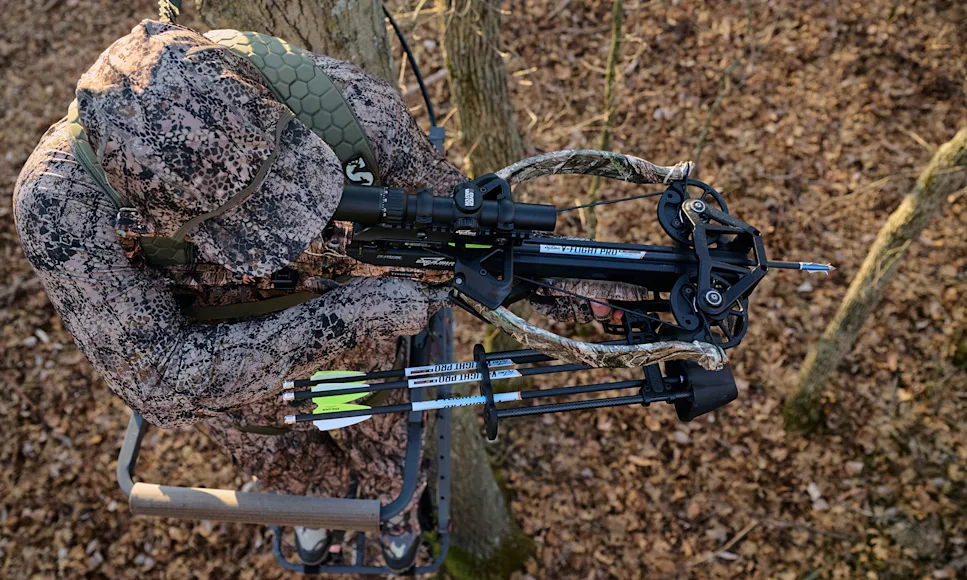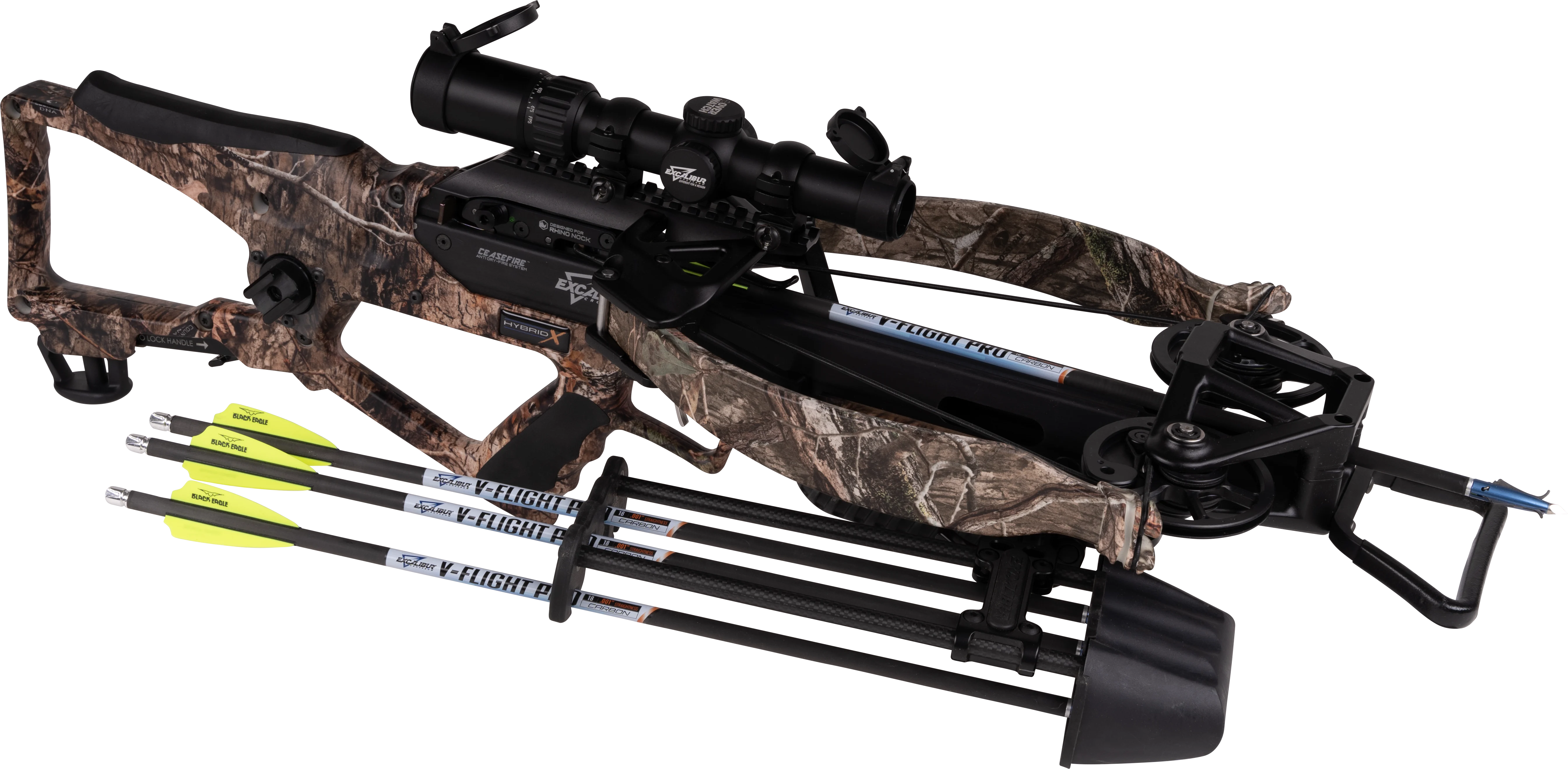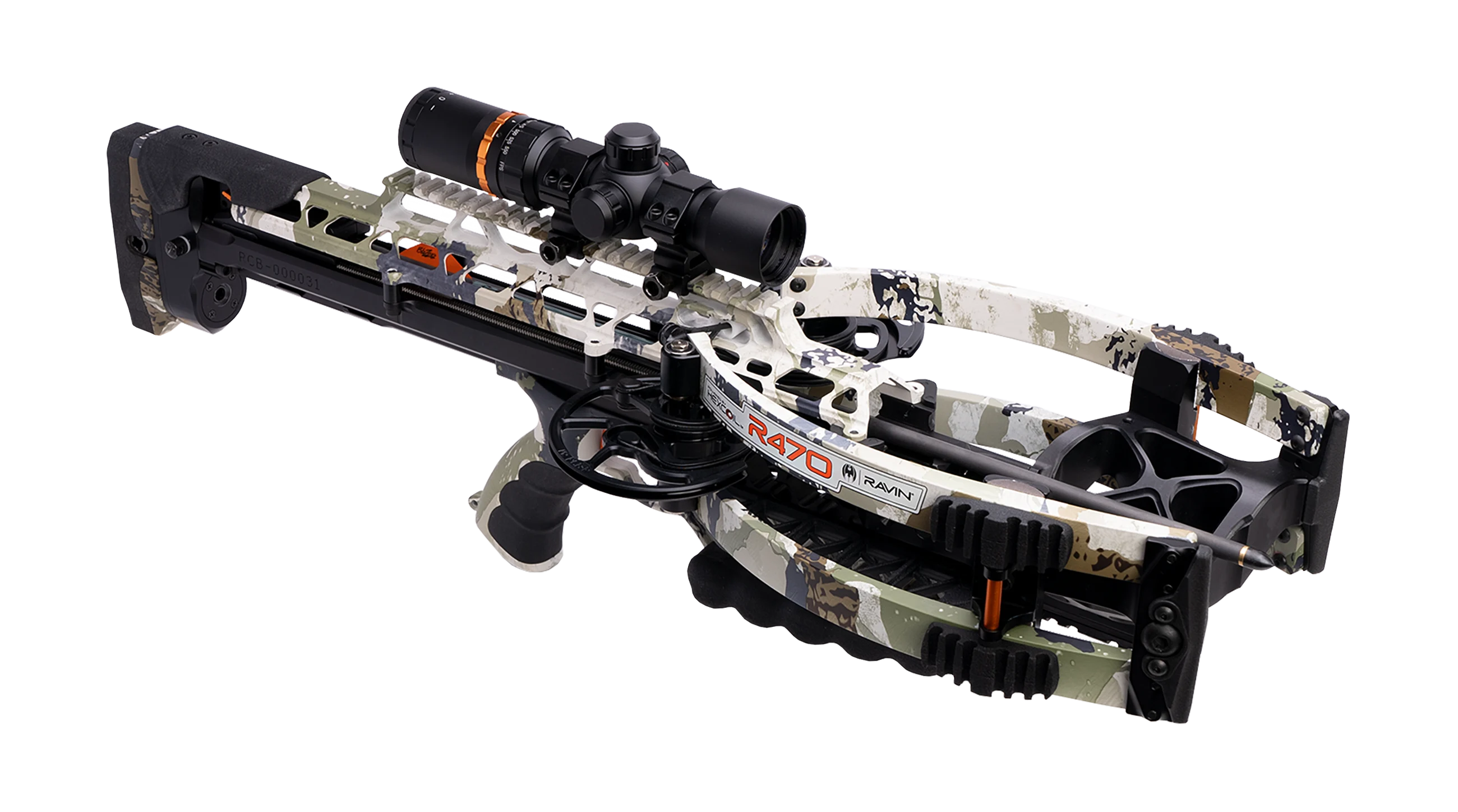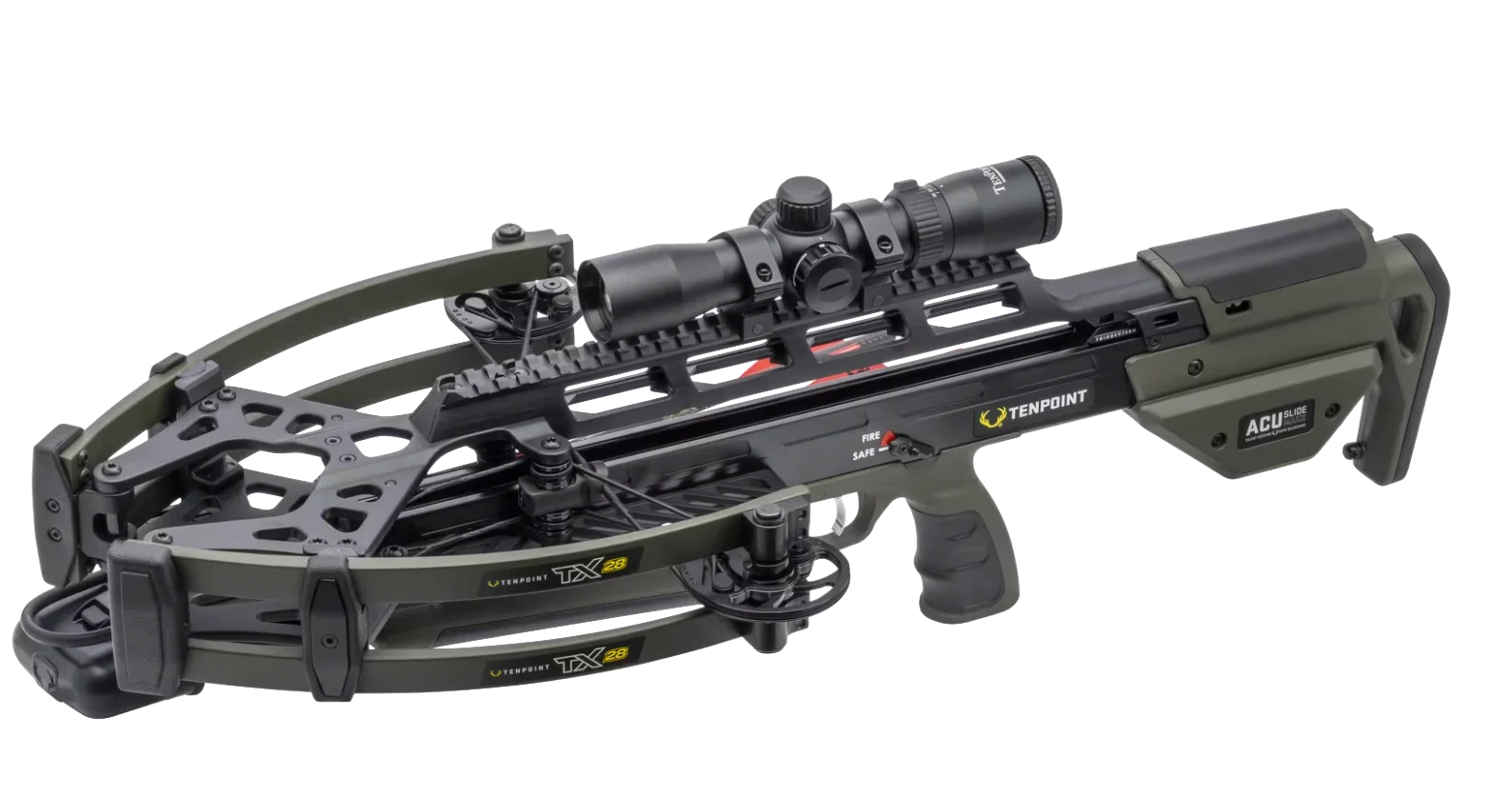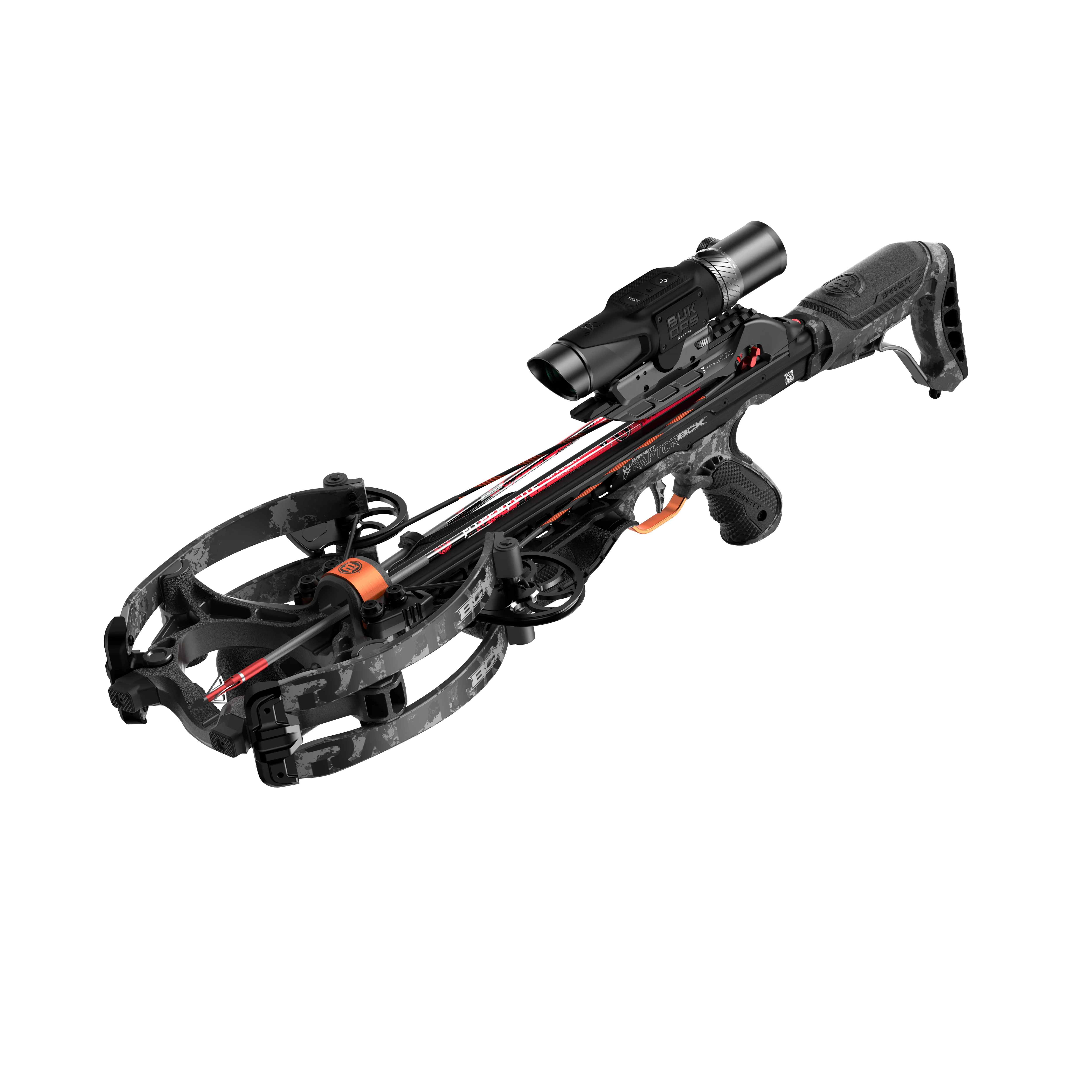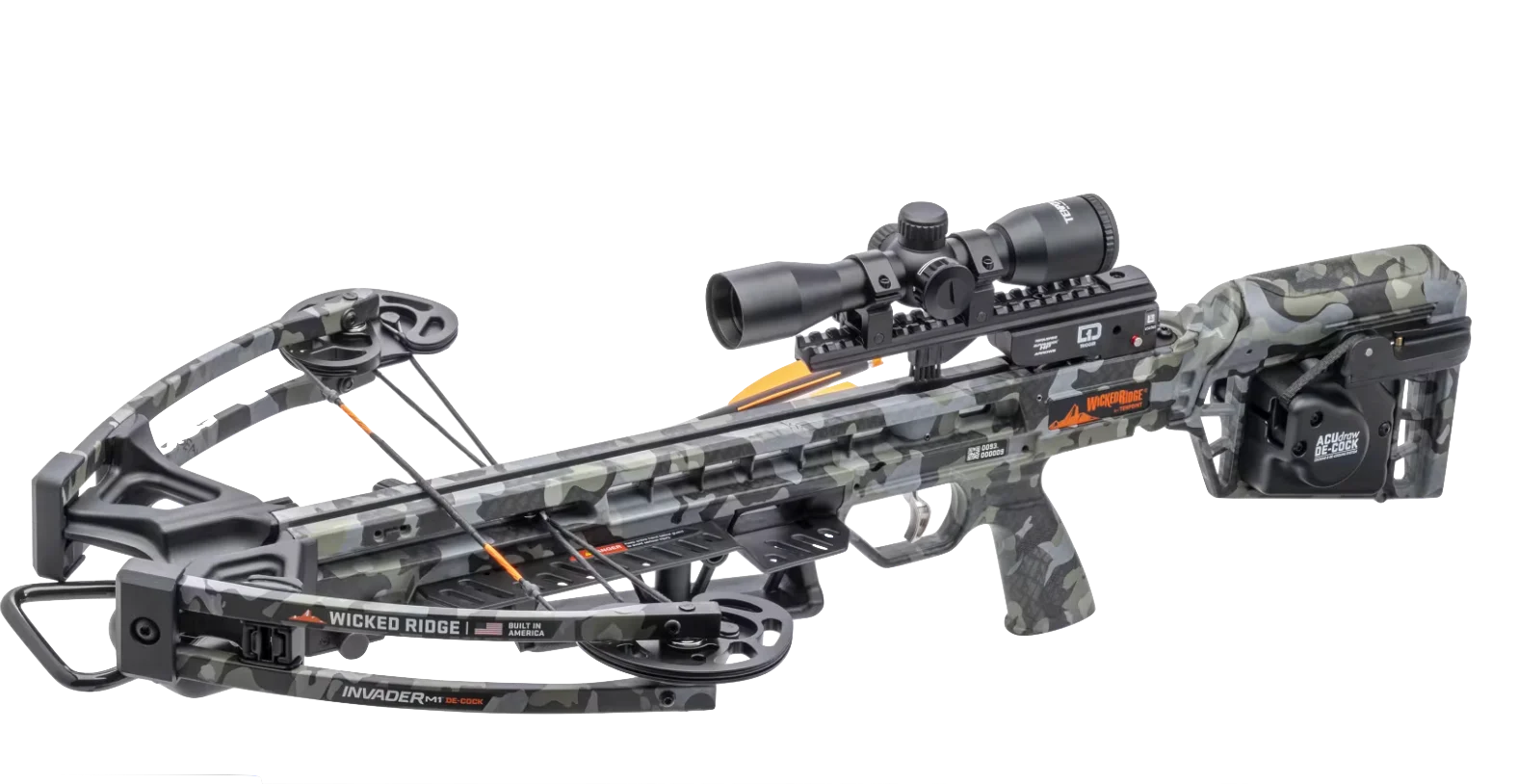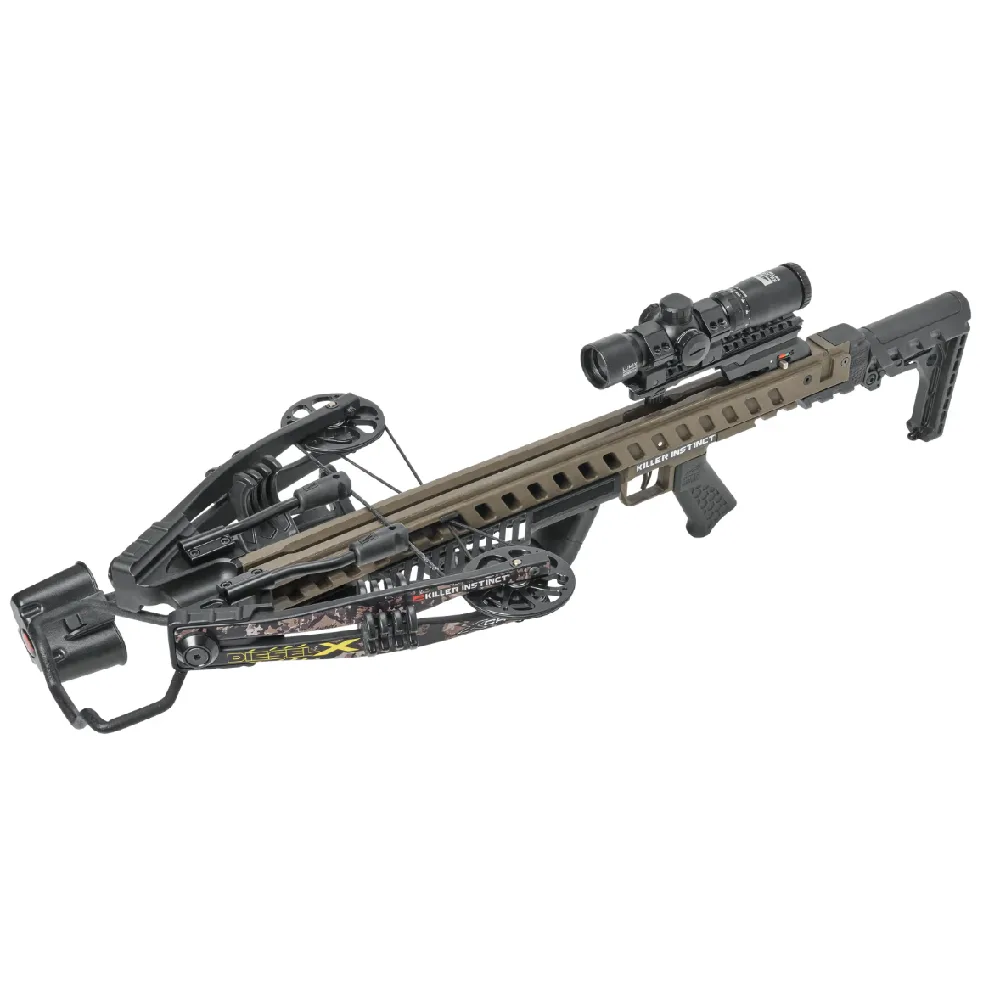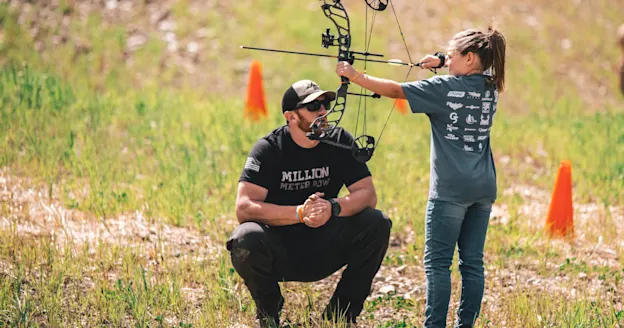We may earn revenue from the products available on this page and participate in affiliate programs. Learn more ›
For 2025, crossbow manufacturers seemed to collectively decide to slow things down a bit. A few short years ago, major crossbow brands like Ravin and Tenpoint were in a race to break the 500-feet-per-second mark, and both were successful. I tested and hunted extensively with such blazing-fast crossbows as the Ravin R500 and Tenpoint Nitro 505 (the latter of which I used to kill one of my biggest whitetails to date).
Those screaming speeds definitely have some flat-shooting advantages—and they’re decidedly cool—but they have their drawbacks, too, elusive broadhead flight being chief among them. In recent years, most crossbow brands have moderated their top-end speeds to focus instead on features that make their bows easier to use and more practical in the field. That’s certainly the case with this year’s crop of new crossbows. All of those I tested were thoughtfully designed, well built, and sported (mostly) good ergonomics. There are also a few true innovations that weren’t added purely in the name of chasing speed and raw power. The five new crossbows I tested were this year supremely accurate across the board—and that accuracy wasn’t necessarily dependent on a high price tag. Below are my picks for the best crossbows for 2025.
Best Overall: Excalibur Hybrid-X
Fastest Crossbow: Ravin R470
Best Value: Barnett Hyper Raptor BCX BukOps
Best Handling: TenPoint TX-28
Related: The Best Compound Bows of 2025, Tested and Reviewed
Best Overall: Excalibur Hybrid-X
Specs
Speed: 431 fps
KE: 165 foot-pounds
Arrow Weight: 400 grains
Average Group: 1.75 inches
Trigger: 1 lb, 10 oz
Overall Weight: 9 lbs, 13 oz
Price: $2,200
Pros
Rugged
Innovative design
Extremely accurate
Plenty fast
Cons
Bulky and heavy
Arrows can be a little tough to fully seat into place
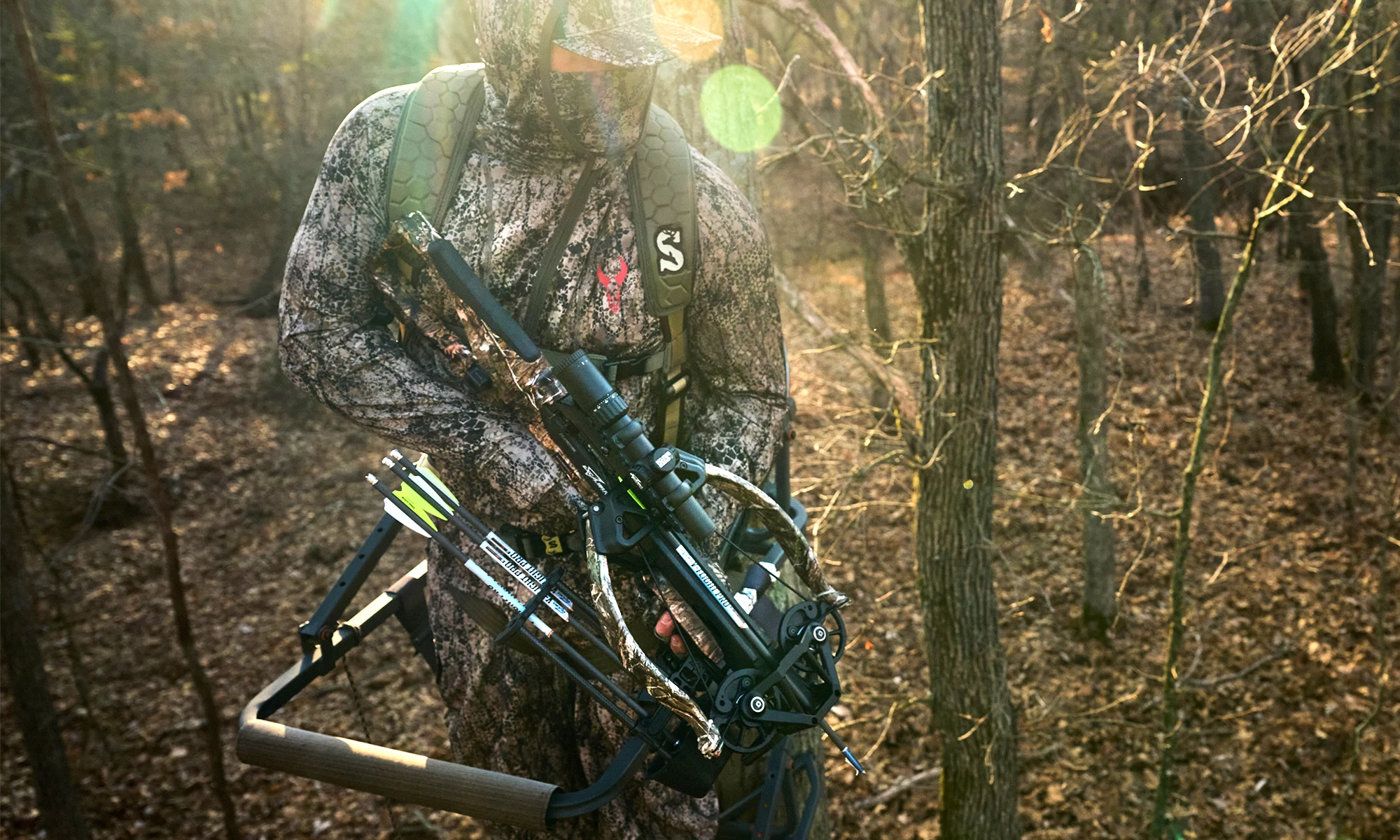
The Excalibur Hybrid-X is one of the most interesting new crossbows I’ve tested in years, blending some of the best attributes of Excalibur’s signature recurve design with many of the advantages of a compound crossbow. The Hybrid-X places the cams in a beefy aluminum bracket alongside the riser and slaves them to a pair of reverse-facing recurve limbs with cables. The result is a pair of cams that are protected from hitting brush, ground blind frames, and the like blended with the proven strength and durability of Excalibur’s compression-molded recurve limbs. With the use of a special stringing tool (sold separately), the crossbow can also be restrung without a bow press.
The bow is cocked with the ChargerX Integrated Crank cocking system. If you’ve used the cocking systems on many Ravin and Tenpoint bows, this one will seem familiar. Releasing tension on the trigger box by backwinding the cocking handle allows you to slide the trigger system down the rail and connect to the string. Then you engage the safety, wind it up with the cocking handle until it clicks into place, and backwind the handle three times to relieve the tension on the cocking mechanism. At that point, you can store the handle in the stock, load an arrow, and fire away. All of these systems, regardless of brand, have proven reliable for me, and they allow for easy cocking and de-cocking. This one is no different, except that I would say this bow is particularly easy to cock, requiring only 14 pounds of effort.
The Hybrid-X also has a CeaseFire anti dry-fire device that will only allow the bow to be fired if an arrow with Excalibur’s Rhino Nock is loaded perfectly into place. That’s where I ran into my only hiccup with this bow. The nocks on some of my test arrows were apparently slightly out of alignment. Early in my testing, I ran into issues of the bow not firing, even though I thought I’d done everything correctly. A trouble-shooting call to Excalibur, and trying the bow with several different arrows, revealed the nock issue. My advice before hunting is to test-fire every arrow that you have, and to be sure and seat them firmly when loading so that you hear them click slightly into place.
The Hybrid-X was exceptionally accurate, turning in sub-2-inch groups at 50 yards. It shot well with broadheads, too, with both fixed and mechanical heads hitting within an inch of the field points. Fit and finish were exceptional, as was the Overwatch scope. The trigger was light and crisp, creating a total package that left little of anything to complain about. In the end, was easily my favorite new crossbow of the year and earned our Best Overall award.
Fastest Crossbow: Ravin R470
Specs
Speed: 472 fps
KE: 198 foot-pounds
Arrow Weight: 400 grains
Average Group: 1.5 inches
Trigger: 1 lb, 12 oz
Overall Weight: 9 lbs, 8 oz
Price: $2,550
Pros
Fastest, hardest-hitting crossbow of the test
Very accurate
Compact and nice to handle
Cons
Safety is hard to access
Broadhead flight wasn’t great
Suspect cocking system
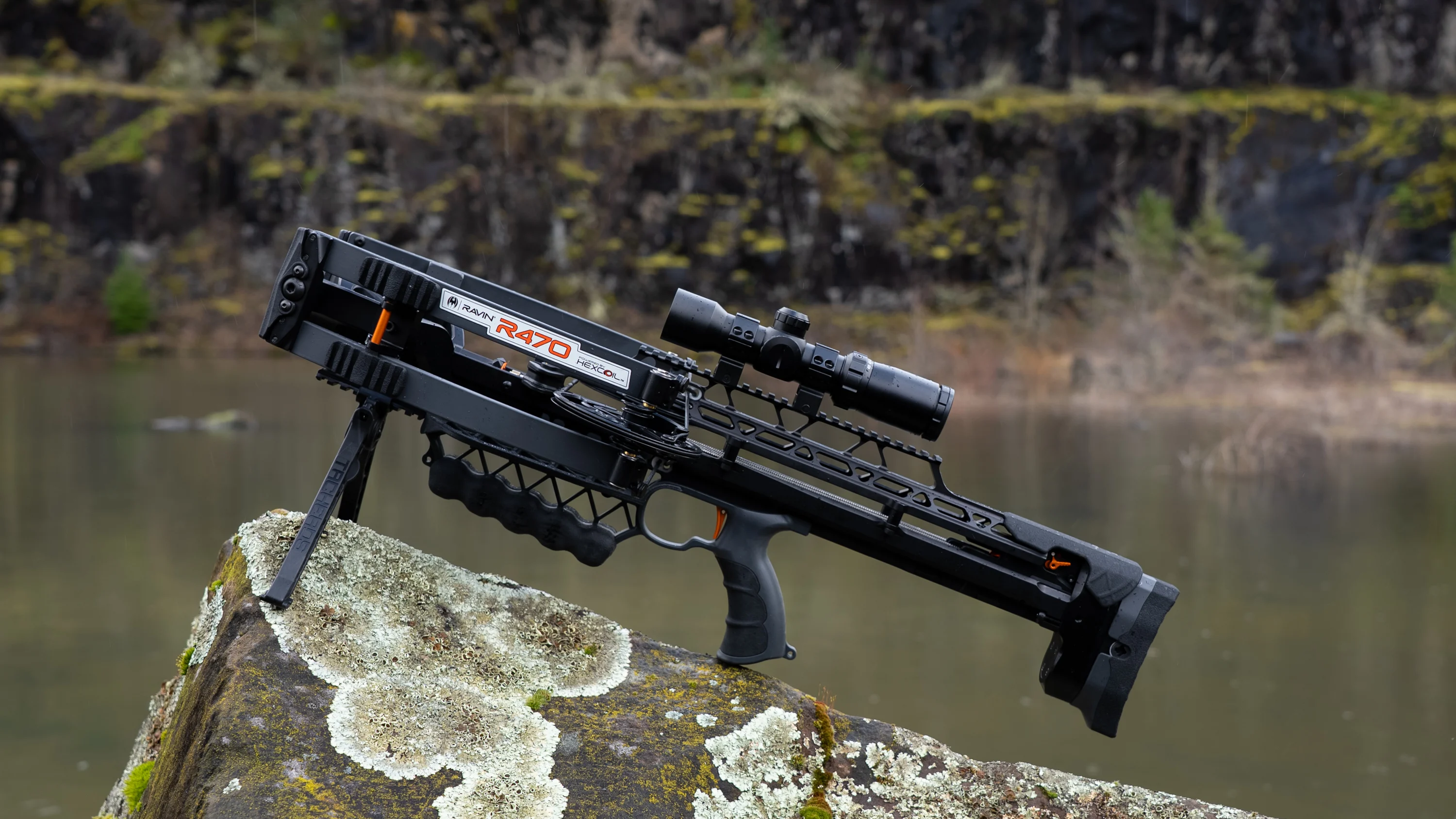
Blazing speed and power aren’t completely forgotten in this year’s test field, as proven by the Ravin R470, a crossbow of outstanding quality and performance almost across the board. It was by far the fastest crossbow I tested, and one of the most accurate, too, at least with field points. It is also very portable and handy without being too small (in the way that Ravin R18 is, for example).
In my experience, fixed-blade broadhead flight starts getting sketchy at speeds beyond 450 feet per second (and sometimes at slower speeds than that), and that was true of the R470. Mechanical broadheads hit right with field points, but fixed three-blades consistently landed 3 inches off the mark (and even then, not always in the same place).
The crossbow had an excellent trigger and scope, and was generally of exceptional quality with aluminum construction throughout. My biggest critique is in the VersaDrive cocking system, which uses a pair of threaded, spinning bars to engage the trigger group and cock the bow. It’s a neat system, but one that I’ve seen fail catastrophically in the field on the Ravin R500, the original crossbow to incorporate it. A buddy of mine had a similar failure with his R500 as well. I fully admit, I’m basing my criticism of this bow on an experience with a previous bow, and I have to assume that the flaw, whatever caused it, has been remedied on the R470. I had no problems whatsoever with my test bow.
Compared to the R500, the cocking procedure on the R470 does end in a more positive hard stop, which is reassuring when shooting the bow. I don’t personally care for the safety location on the rear of the bullpup stock, but to get a package this compact and handy, some accommodations must be made.
Related: The Best Cellular Trail Cameras of 2025, Tested and Reviewed
Best Value: Barnett Hyper Raptor BCX BUK OPS
Specs
Speed: 400.5 fps
KE: 146 foot-pounds
Arrow Weight: 400 grains
Average Group: 2 inches
Trigger: 2 lbs, 7 oz
Overall Weight: 8 lbs, 15 oz
Price: $1,199
Pros
Incredible arrow penetration
Excellent broadhead accuracy
Comparatively lightweight
Adjustable for fit
Cons
Scope adjustment system seems fragile
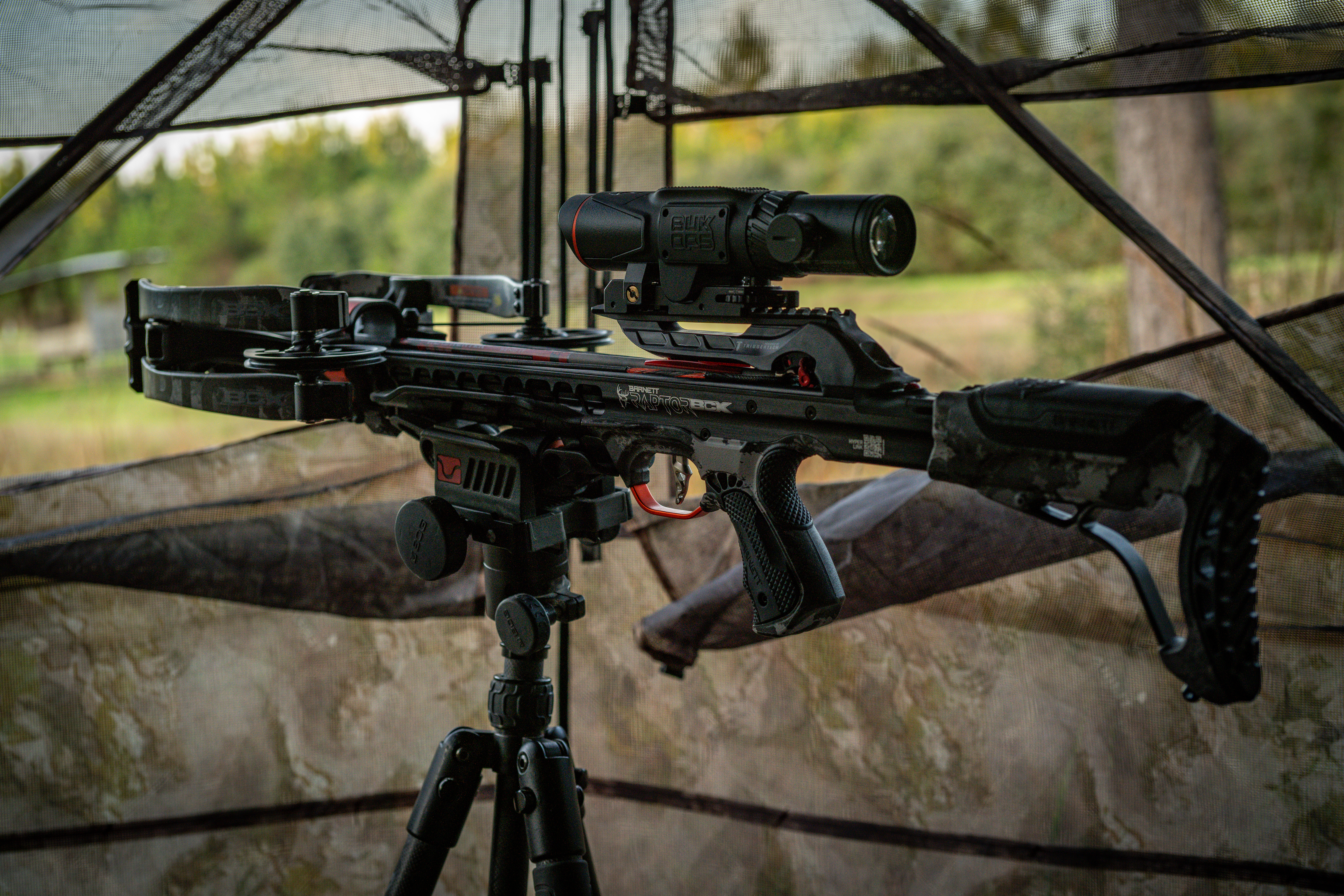
Barnett’s mid-tier crossbows, several in the Raptor series, have been frequent recipients of our crossbow test’s Best Value award, and this year’s Hyper Raptor BCX with BUK OPS X-Factor wins it for 2025. The Hyper Raptor series utilizes Barnett’s 20-inch HyperFlite micro-diameter arrows, which provide the same advantages for crossbow shooters that they do for vertical bow shooters. These arrows fly true, hit hard, and penetrate deep. Although other bows in the test did produce better 50-yard groups, this crossbow certainly held its own, and it was the best broadhead shooter of the test, with both fixed and mechanical models hitting pretty much in the same hole as field points.
It had a nice, crisp trigger, and although the fit and finish wasn’t as good as on some more expensive models, the stock is adjustable for length of pull, and the fore-end has a swing-out pistol grip that could be useful in some hunting situations. The bow is cocked by way of an old-fashioned rope and sled.
The BUK OPS version of the Hyper Raptor does sport some interesting optics options. My test bow had the X-Factor rangefinding scope, which has an illuminated reticle with graduated yardage marks (same as most crossbows), and a magnification adjustment dial to correspond the bow’s speed with the correct holdover distance. The scope also has a battery-operated rangefinder built in. Aim the bow, hit the button on top of the scope, read the yardage, adjust the holdover accordingly, and shoot. It works, and the yardages matched perfectly with my personal rangefinder.
My critique of the system is that the windage and elevation adjustments aren’t built into the scope, but into the mount, with large adjustment dials. To be clear, it worked just fine on the range, but it’s not a system that I’d personally want to trust in the woods, as it’d be easy to spin one of the dials and change the zero without noticing, or get brush and grit hung up in the works. Still, it’s a neat feature for hunters who like such gadgets, and for those who don’t, standard crossbow scopes are available in other accessory packages—and they lower the total price of this crossbow even more. In the end, this crossbow has a ton of features and very good performance for the money.
Best Handling: TenPoint TX-28
Specs
Speed: 383 fps
KE: 145 foot-pounds
Arrow Weight: 445 grains
Average Group: 2.5 inches
Trigger: 2 lb, 10 oz
Overall Weight: 9 lbs, 2 oz
Price: $2,150
Pros
Best-handling crossbow of the test
Great safety mechanism
Quality build
Cons
Pricy, given the performance
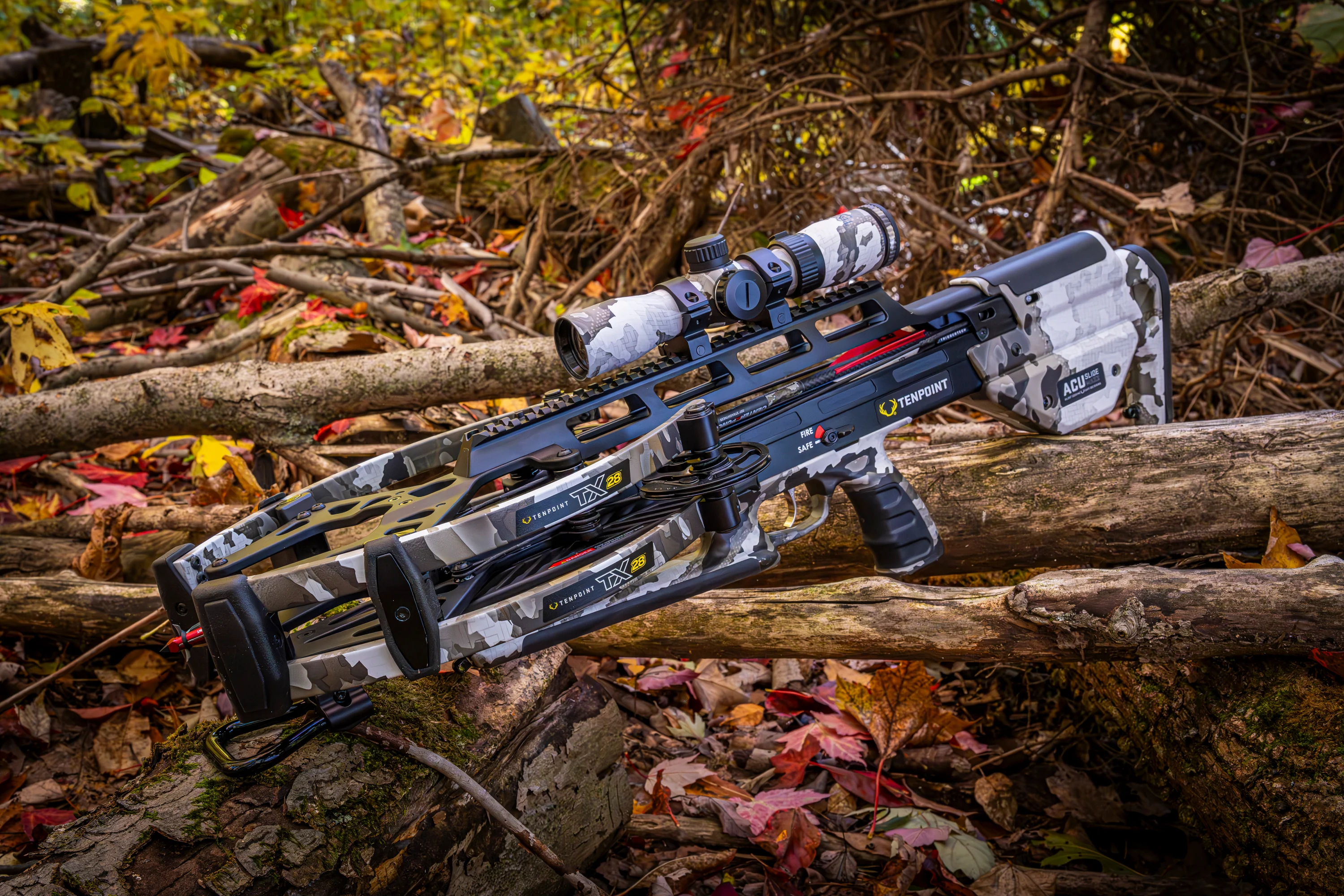
The TX-28 handles like a dream. The narrow fore-end nests perfectly in a DeathGrip tripod (which is exactly how many crossbows are used in the field), and it has the very best safety that I’ve used on any crossbow, ever. It’s just a nice thumb selector that’s right where it should be, directly above the trigger guard, and ambidextrous. It goes on and off with a satisfying click.
The bow sports an excellent TriggerTech trigger, and ZERO-Trac barrel that all but eliminates contact between the arrow shaft and crossbow rail. The scope is mounted on a beefy aluminum platform and Picatinny rail that’s supported on two ends, and the whole setup just feels like it should last a long time. The ACUSlide cocking system, which I’ve used extensively on other crossbows, makes cocking and de-cocking easy for just about anyone. Overall, this is a very good piece of equipment.
But it’s not perfect, primarily because it costs more than it should, given its performance. Published speeds above were clocked using CenterPunch premium carbon arrows, which weigh 445 grains. That weight will slow them down, although the tradeoff is more momentum, which I do like. Still, sub 400-fps velocity is pretty slow in 2025. I also tried the crossbow with the 400-grain arrows used for the Wicked Ridge Invader M1 (below), and those just broke the 400 fps mark.
Unfortunately, those sluggish speeds weren’t made up for with precision. Although the crossbow shot 1-hole groups with field points out to 30 yards, 50-yard groups opened to well over 2 inches on average. To be clear, that's still good accuracy and more than adequate for hunting—but they were the widest groups of the field. Fixed-blade broadheads hit more than 3 inches off the mark at 30 yards, too. Some of this year’s faster crossbows shot both broadheads and field points better. When that’s the case, there’s no reason not to seize the advantage. I’d love this crossbow if it cost around $1,200—but for more than $2K, you'd like to see better performance.
Wicked Ridge Invader M1 De-Cock
Specs
Speed: 374 fps
KE: 124 foot-pounds
Arrow Weight: 400 grains
Average Group: 1.75 inches
Trigger: 4 lb, 14 oz
Overall Weight: 8 lb, 8 oz
Price: $899
Pros
Lightweight
Easy to use
Very accurate
Affordable
Cons
Heavy trigger
Low quality scope
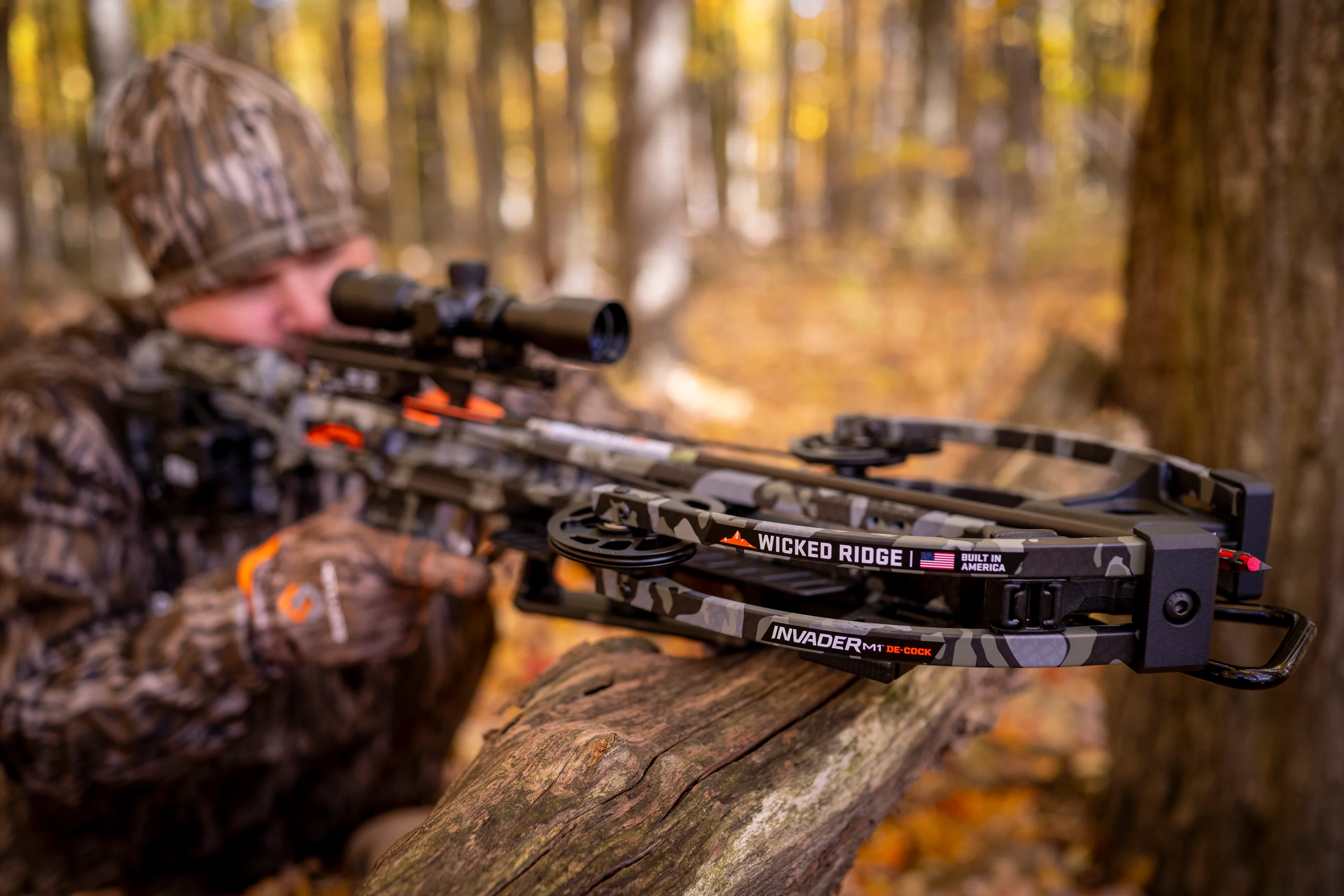
I’ve tested several versions of the Wicked Ridge Invader over the years, and they’re always great crossbows for the money. They shoot well, are well built, easy to use, and affordable. Plus, they’re made in the USA. The newest version, which I tested here, uses the ACU-Draw De-Cock cocking device, which makes it easy to both cock and de-cock. The system is slow compared to others, such as Tenpoint’s ACU-Slide, but it works well. The Invader can also be cocked with a traditional rope and hooks or rope and sled, which is something I appreciate.
This crossbow wasn’t very fast, which is to be expected at the price point, but it was accurate, turning in sub-2-inch groups at 50 yards, and outshooting the far more expensive Tenpoint TX-28. (I make the comparison because Wicked Ridge is Tenpoint’s more budget-friendly sister brand). Although it shot great with mechanical broadheads, fixed-blade heads were several inches off the mark, which was somewhat surprising given the crossbow’s moderate speeds.
My main complaints with the Invader are of the trigger, which was very heavy at almost 5 pounds, and the Pro-View 400 scope. my test bow hit some 10 inches low at 50 yards when aiming with the 50-yard crosshair, which led me to believe that it was calibrated to 400 fps (faster than it actually shoots). Without a magnification/speed dial, adjusting for longer shots would be difficult. Still, a hunter could buy this crossbow and be assured of years of service at a great price—and in fact, have the savings left over to invest in a better scope and plenty of extra arrows and broadheads.
Killer Instinct Diesel X Elite
Specs
Speed: 401 fps with 390-grain finished arrow
Size: 34.4 inches overall length; 6.25 inches wide (cocked)
Physical Weight: 7.4 pounds
Trigger Weight: 3.2 lb.
Accuracy: 2.125-inch average 40-yard group
Price: $499.99
Pros
Good speed and power
Least expensive crossbow of the test
Cons
Comparatively big and bulky
Killer Instinct consistently produces excellent crossbows for the money, and while the company did not send us a new crossbow for testing this year, I'm including my previous review of the Diesel-X Elite because it is still available, still a solid bow for the money, and it costs even less now. This crossbow sports the company's X-Cam system, which has 50 percent let-off for easier cocking and, according to KI, makes for a quieter, more vibration-free crossbow. The Diesel-X Elite is compact at just 6.25 inches wide when cocked, and the stock is adjustable for length of pull. The accessory package includes a Lumix Speed Ring scope, rope sled cocking device, quiver, three arrows, and rail lube.

At nearly 35 inches long and 7.4 pounds bare bow, the Diesel-X is big and bulky, particularly so in this field. In my testing, the bow averaged groups of a little more than 2 inches at 40-yard, which is more than adequate for hunting, and fixed-blade broadheads hit more or less in the same place as field points. This is the least-expensive crossbow in this group by a fair margin and is an outstanding value. KI crossbows are well-built and boast a limited lifetime warranty.
How We Tested Crossbows
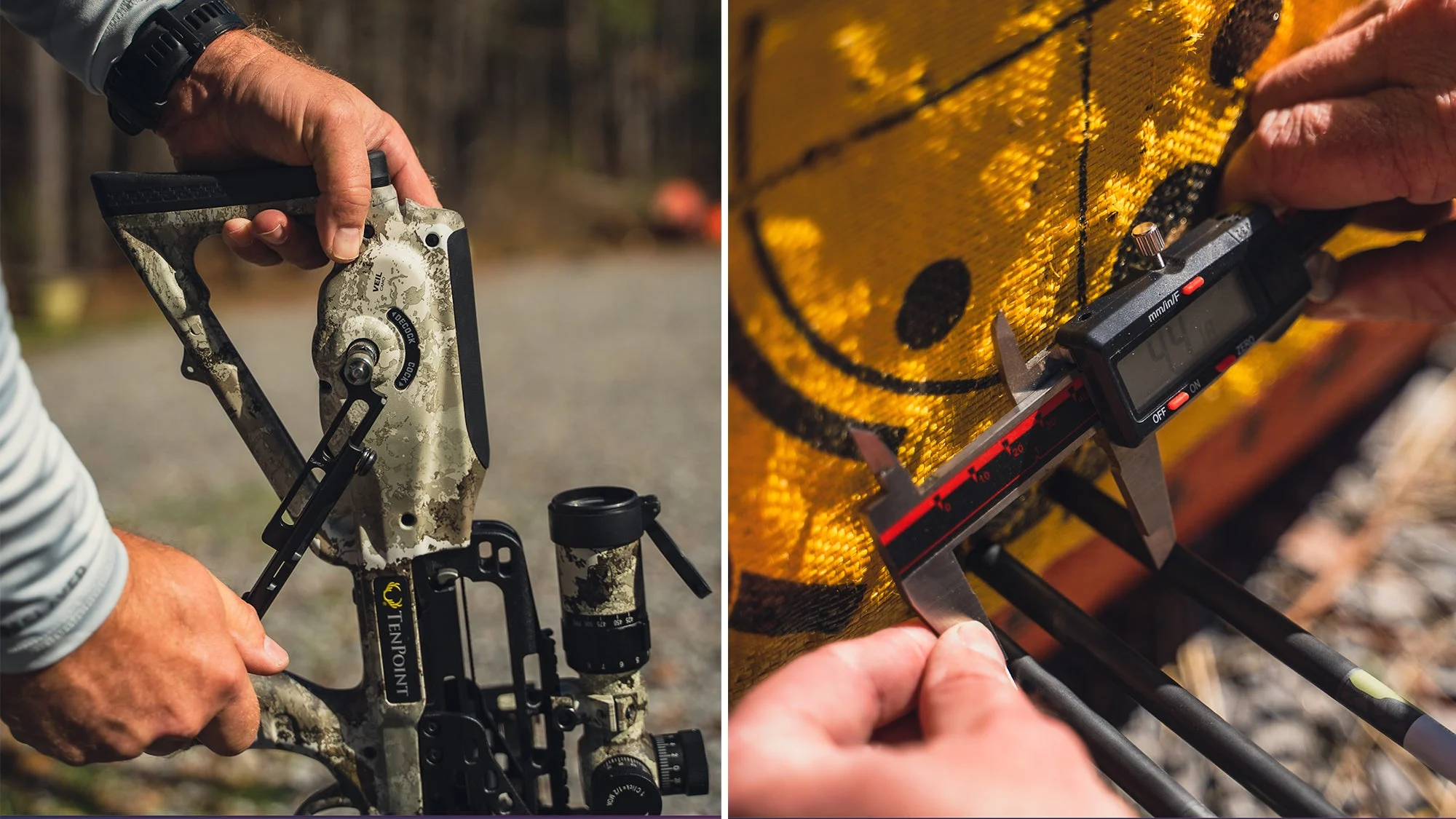
As always, the F&S crossbow test was an invitational, and all major brands were invited to submit the new bow of their choice. Crossbows were tested using the manufacturer-provided accessories. Because of that, there are some extensive differences in arrow weight that can greatly affect speed. All arrow weights are listed, and we’ve included kinetic energy figures in addition to velocity readings, both of which were crunched using a Garmin Xero chronograph.
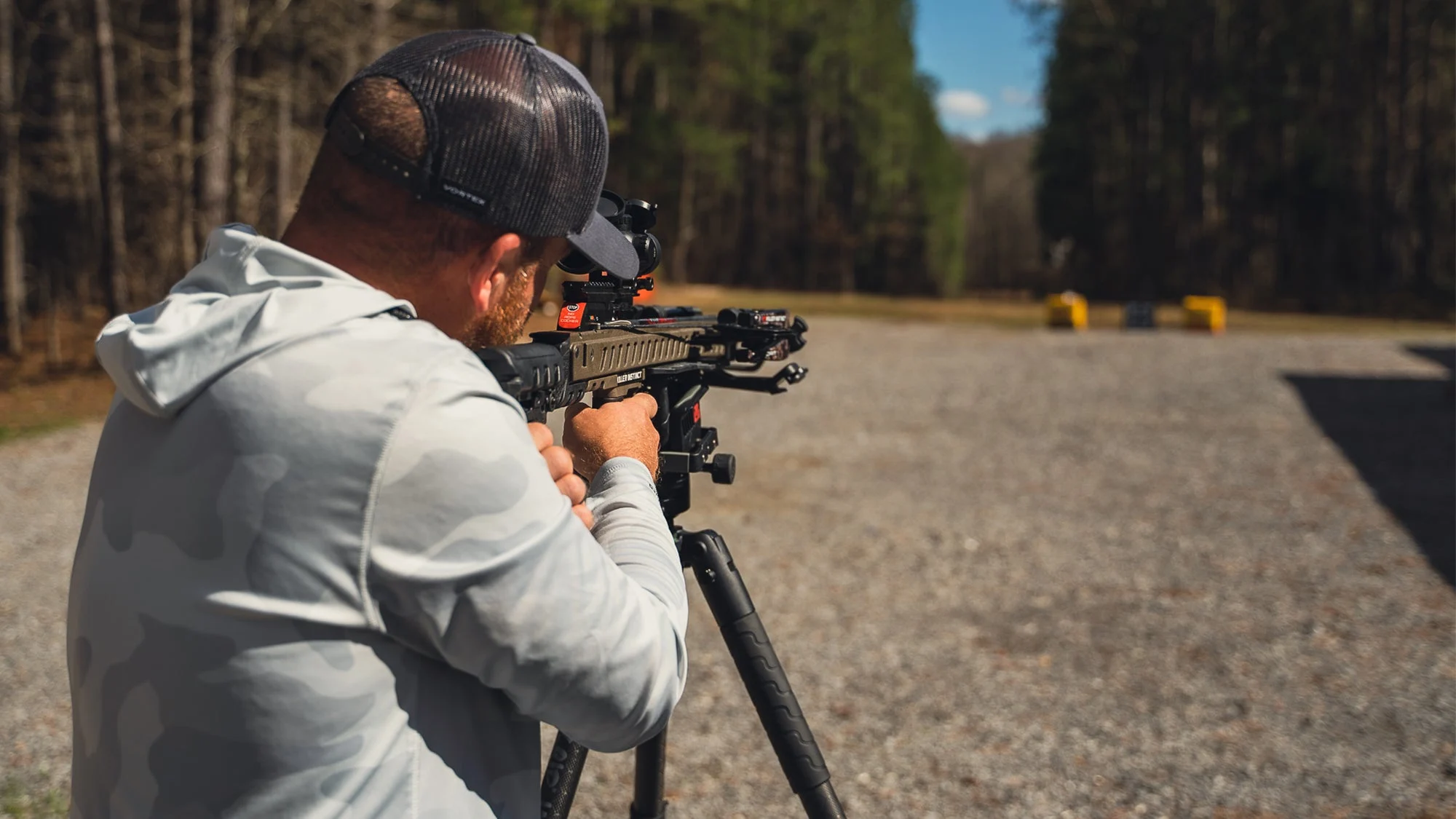
The crossbows were initially sighted in at 20 yards, and then field-point accuracy testing was done at 50 yards. Group size listed is the average of three, three-arrow groups. In addition, broadhead evaluations were done at 30 yards with both fixed (100-grain Wasp Drone) and mechanical (100-grain Tenpoint EVO-X Centerpunch) broadheads. I didn’t measure broadhead group size, but instead evaluated consistency of flight, and measured how far “off” from the field point zero the broadheads landed on target. As an avid crossbow hunter myself, if a broadhead hits within an inch or so of my field points and only requires a minor scope adjustment, I’m happy.
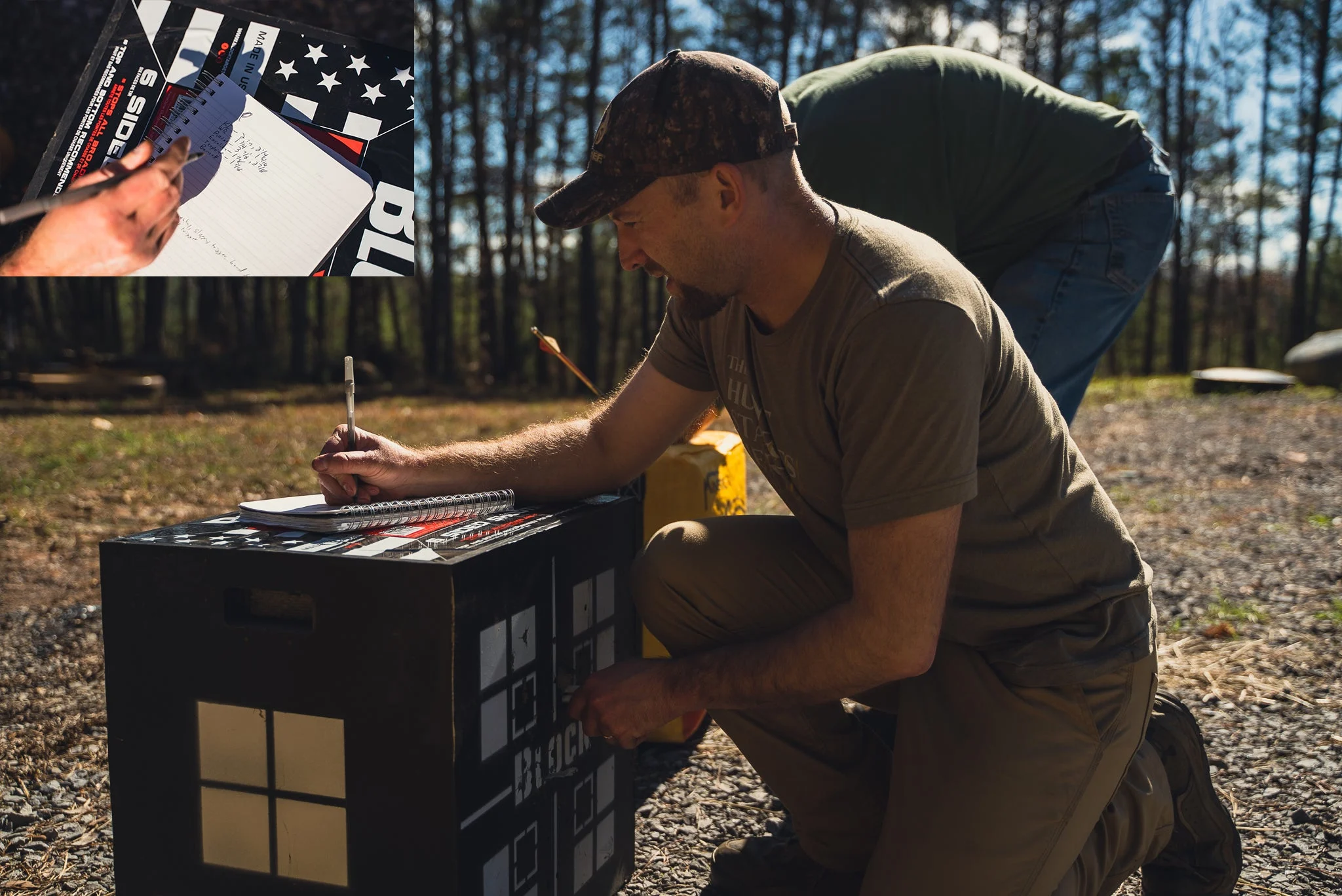
Trigger pulls were evaluated subjectively, and their weights measured with a Lyman trigger scale. That same scale was used to weigh each crossbow, with its respective scope mounted. All accuracy testing was done from a seated position with a BOG DeathGrip tripod. During the testing I also evaluated the quality of the accessories, fit and finish, handling, and cocking effort. The overall Best of the Best model is just that. The Best Value award doesn’t go to the cheapest crossbow, but to the one that gives the most bang for the buck.
What To Look for in a Crossbow
Price
The best crossbow for the money is the one that best fits your desired parameters. These will vary from person to person, but the methodology used to assess each option remains the same. We can’t allow things like name brand, camo finish, or price-point dictate too much of the evaluation process. Sure, if you’re on the prowl for the best budget crossbow, price is a consideration. But often, the best bow for your budget isn’t the cheapest or the most expensive choice. The best bow is the one that fits into your budget and offers the most ideal combination of performance and features for you.
Recurve vs. Compound
If you’re new to crossbow hunting, your ideal bow could well be different from what a veteran crossbow hunter would desire. Similarly, if you’re only interested in compound crossbows, then you certainly shouldn’t evaluate them against recurve crossbows. The experience between the two is very different and the comparison isn’t a logical one. The cams present in a compound crossbow let it generate more power in a compact package, as it doesn’t need the long limbs of the recurve to generate speed.
But recurve crossbows are easier to work on, saving you a trip to the pro shop every time you need an adjustment. You’ll need to decide if the small size of the compound is more desirable than the simplicity the recurve offers when making a choice. In the end, there is no singular “best” crossbow for everyone. There are, however, best crossbows for specific situations—including yours.
FAQs
Q: How long will a crossbow last?
Assuming you take care of it, there’s no reason you can’t expect a lifetime of use from your crossbow. Sure, you’ll need to replace cables and strings from time to time. But unless you’re shooting thousands and thousands of arrows each year, xbows are meant to take serious abuse and the limbs and other related stress-points have been tested to survive more shots than the average bowhunter will likely take.
Q: Can I kill a deer at 100 yards with the best crossbow?
Today’s crossbows are stupid accurate. It is possible to deliver an arrow with consistency on target at distances up to 100 yards, especially using the best crossbow scopes. However, perhaps a better question is: Is it ethical to try and kill a deer at 100 yards with a crossbow? A lot of things can happen in the time it takes an arrow to travel 100 yards, even from a crossbow pushing 500 fps. There’s a reason you don’t see many videos of people attempting shots like that. If you can’t kill a deer with a xbow at lesser distances, you may need to re-evaluate your stand or blind setup to give you closer shots.
Q: Do I need to buy the most expensive option to get the best performance?
Not necessarily. While you often do get what you pay for, there are some great affordable crossbows out there that perform nearly as their more expensive counterparts.
Final Thoughts
In the end, I honestly wouldn't hesitate to hunt with any of the new crossbows for 2025. They were all more than accurate enough for the field, and they all worked reliably. That said, Excalibur's new Hybrid-X is my favorite new bow for 2025, thanks to its innovative hybrid recurve/compound design and for it's overall performance in my testing. The Wicked Ridge Invader M-1 De-Cock is a great choice as a budget model, but in terms of value—what you get for your money—you can't beat the new Barnett Hyper Raptor. It's not cheap, per se, but it's a lot of crossbow for the cash.
Why Trust Us
For more than 125 years, Field & Stream has been providing readers with honest and authentic coverage of outdoor gear. Our writers and editors eat, sleep, and breathe the outdoors, and that passion comes through in our product reviews. You can count on F&S to keep you up to date on the best new gear. And when we write about a product—whether it’s a bass lure or a backpack—we cover the good and the bad, so you know exactly what to expect before you decide to make a purchase.

